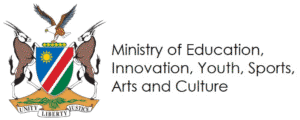Practices that help Grade 11 and 12 learners to improve their performance in Physics and Chemistry: A case of Omusati region, Namibia
Keywords:
practices, improve performance, schools’ administrative, underperformance, strategiesAbstract
In Namibia, Omusati Region is one of the poorly performing regions in Physical Science Grade 12 national examinations. Despite the poor performance, there are few schools in this region which have been ranked among the top six performing schools in the country. These schools are located in the same geographic region with other schools with a poor performance record. Therefore, this study investigated practices that could help improve the academic performance of learners in the Physical Science subject. The sought answered to the following research questions: (1) What are the schools’ administrative and classroom practices that assist learners to academically achieve higher in Physical Science Examinations in higher performing schools? (2) What are the schools’ administrative and classroom practices that may contribute to low performance in underperforming schools? (3) How do administrative and classroom practices in high performing schools compare with those for low performing schools? (4) What mitigation strategies need to be put in place to help low performing schools improve their grade 12 physical science results? The study employed a QUAL-quan research approach of a concurrent nested design by using a case study for an in-depth investigation. An extreme case sampling strategy was used to draw a sample of two schools from a population of seventeen secondary schools in the region. Six Physical Science teachers from both schools (three from each school) took part in the study and were observed over five different occasions. The four domains: (1) planning and preparation, (2) the classroom observation, (3) instruction, and (4) professional responsibilities were used in data collection. Interviews were used to collect data for domain four while domain one, two and three data were collected using a classroom observation. Field notes assisted the researcher to come up with mitigation strategies to be employed by School B. Results from this study showed that the classroom environment (Domain 2) was an important factor that helped learners improve their performance in Physical Science, with less efforts from the teachers towards other practices found in three domains including planning and preparations, instructions and professional responsibilities. Mitigating strategies were suggested to strengthen the classroom environment for School B. These included creating an environment of respect and rapport, establish a culture for learning, manage classroom procedures, managing learner behaviour and organising the physical space. To improve on this domain, teachers were recommended to empower learners through career fairs, peer tutoring, group discussions while the education officers were inadequate to execute the Continuous Professional Development initiatives that focus on improving classroom environment.
Downloads
Published
How to Cite
Issue
Section
License
Copyright (c) 2021 MoEAC, National Institute for Education Development (NIED)

This work is licensed under a Creative Commons Attribution 4.0 International License.






